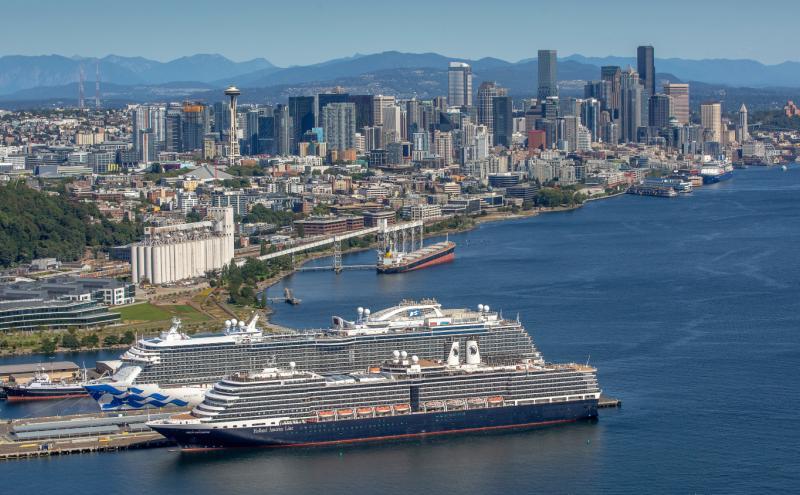The Port of Seattle has announced its commitment to environmental sustainability by making greenhouse gas (GHG) reduction a key factor in renewing long-term cruise berthing agreements.
According to a press release, the order, approved by the Port of Seattle Commission, requires the Executive Director to:
- Evaluate cruise lines’ progress toward achieving Port of Seattle (Port) and International Maritime Organization (IMO) GHG goals before renewing or extending any long-term berthing agreements
- Publicize cruise line emission trends and emission reduction projects underway to attain GHG reduction goals
- Include language in any long-term berthing agreements, leases, renewals and extensions with homeported cruise lines that supports the evaluation of GHG reduction plans
“The Port of Seattle is uniquely positioned to lead the global maritime industry in environmental sustainability best practices and strategies,” said Port of Seattle Commission Vice President Toshiko Hasegawa. “We are leveraging our partnerships to accelerate advancements toward our Century Agenda goals of responsibly investing in the economic growth of the region and all of its communities, and becoming the greenest and most energy-efficiency port in North America, promoting transparency of our progress for the public.”
In 2025, the Port of Seattle expects nearly 1.8 million passengers and over 300 cruise calls, generating over $900 million in economic benefits for the region. However, the port emphasized that this growth may also increase greenhouse gas (GHG) and air emissions unless low- and zero-carbon energy alternatives are adopted.
The Port’s Century Agenda and Northwest Ports Clean Air Strategy (NWPCAS) aim to eliminate emissions from all seaport-related sources by 2050, aligning with the International Maritime Organization’s (IMO) strategy for net-zero GHG emissions in shipping by 2050. The Port’s new policy supports maritime decarbonization, and in June, it became the first U.S. port to mandate that 100 percent of homeported cruise vessels be shore-power capable and use shore power by 2027.




